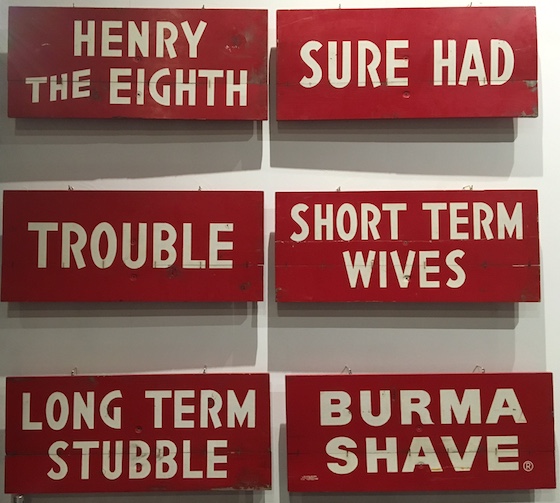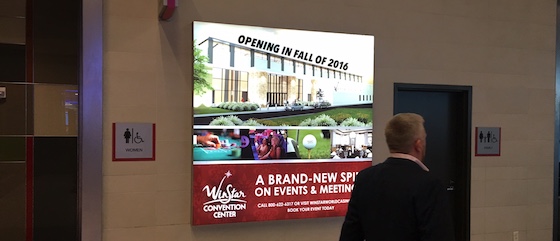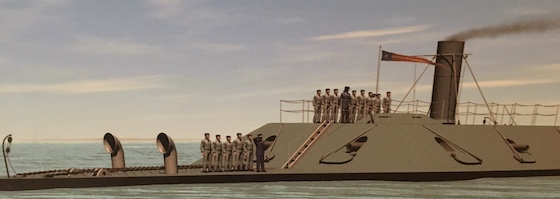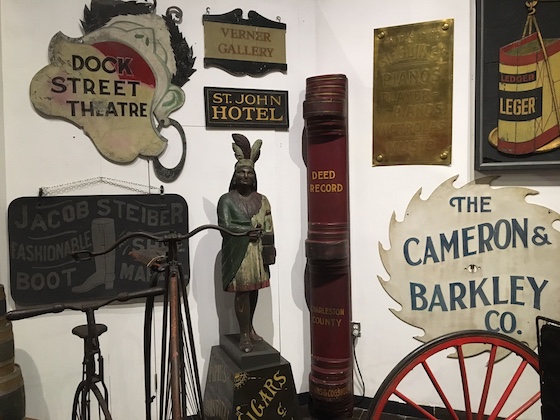Memo From Frank
A recent study shows that healthcare premiums are going to be going up significantly this year. Another shows that housing costs are rising substantially. Everywhere you look, the cost of living in the U.S. is higher every year. The only solution to stay ahead is to come up with multiple sources of income. A day job is not enough anymore – you need multiple income sources. And that’s not even counting the potential of losing your day job in our weak economy. So where can you find additional income sources. One place is in the billboard business. Even a wooden billboard in a small town can earn $2,000 or $3,000 per year. Four of them can pay your annual housing cost. Eight can pay your kid’s college tuition. And 40 can have you set for life. The nice thing about billboards as an additional income source is that they are perfect to work around your day job – many a billboard empire has been built strictly on nights and weekends. And you always maintain the flexibility to be as big or small as you want. If you have not looked into billboards as a hedge to an America in decline, I urge you to do so.
Giant Billboards = Giant Dollars

This a photo of a giant wallscape in Dallas, Texas. It probably rents for $10,000 per month or so. It might net the owner $80,000 per year. The fact is that there is no greater money-making plan of action than the installation of a giant sign. From Times Square to your local downtown, those landmark signs are some of the most profitable on earth.
Big signs charge big rents
It only makes sense that uniquely huge signs should have gigantic price tags. When I built my 120’ tall, 20’ x 60’ billboard on I-30 at Beltline Road in Dallas – the largest billboard of its type at that time – I was able to rent it for three times more than normal signs on the same stretch of highway. Any time you can elevate a billboard into a “landmark” – something of such unusual proportions that people talk about it and remember it for its uniqueness” – you always end up with a winner. They say that bigger is not always better but, in the case of billboards, that’s never the case.
Operating cost of big signs is not that much more
What has revolutionized monster billboards has been the invention of vinyl printing. Prior to that discovery, all signs were laboriously hand-painted, which was dangerous and extremely expensive. Pictorial billboards (signs with pictures on them) cost around $5 per square foot to paint but can be perfectly printed on vinyl for around 85 cents per square foot today. And that does not even include the extreme cost of scaffolding or other means to get the painters in position to paint. Today, the cost of installing a giant sign is only based on the total square footage of the ad. The cost to print a vinyl for a 2,000 sq. ft. billboard is around $1,700 and the cost to print a vinyl for a standard 14’x48’ billboard is around $571. When you consider that the huge sign might rent for five times more than the 14’x48’, you can see that the operating cost is peanuts compared to the revenue received.
Most giant signs are really cheap to build: they just attach to existing objects
What has really revolutionized giant signs is the advancement in vinyl technology. In the old days, you had to build a rigid service to paint on – a wall of plywood. This was structurally complicated, extremely heavy, and required a huge amount of cost and effort. Today, you can hang a vinyl on virtually anything, using nothing more than the installation of stainless steel hooks. Wallscapes – the hanging of vinyl on building walls – have revolutionized how giant signs are made.
Don’t forget the 660’ rule
Many people are unaware that the Highway Beautification Act, and the supporting sign control acts in many states, only have power over property located within 660 feet of the right-of-way. Check with you state and local laws. If this is the case, you can build signs of any size and spacing you desire outside of those limits. You’ve probably seen these early attempts to get outside the controlled area – typically giant wooden signs that are typically missing a plywood panel or two. When the Beautification Act was invented, they assumed that you could not really build billboards 600 feet back from the road, as they would have to be so large that it would be uneconomic to build and maintain them. Back when signs were made out of telephone poles and plywood that was pretty much the case. But the advent of vinyl technology has made those same signs simple and inexpensive to create if you can find something to hang them on. Think of giant structures that you drive by all the time that are at least 660’ off the road, such as grain elevators and water towers. Based on your state and local laws, those might be candidates for giant signs. Here’s one.
Conclusion
Truly gigantic signs are some of the most profitable in the U.S. And the barrier to entry in such signs has been greatly reduced by the invention of vinyl. Small signs are great, but giant signs are fantastic. Expand your horizons and see if you can find some giant sign opportunities in your market.
The Story Of Burma Shave

Burma-Shave was an American shaving-cream brand introduced in 1925 by the Burma-Vita company. The company's original product was a liniment made of ingredients described as having come "from the Malay Peninsula and Burma." Demand was low, and the company had to break out of its rut if it wanted to survive. This led to the Burma-Shave brand of brushless shaving cream and its supporting billboard program. Sales soared. At its peak, Burma-Shave was the second-highest-selling brushless shaving cream in the U.S. Burma-Shave signs first appeared in 1926 on Highway 65 in Lakeville, Minnesota, and then branched out from there. The only states that had no Burma-Shave signs were New Mexico, Arizona, Nevada, Massachusetts, Hawaii and Alaska. They were traditionally in white copy on a red background, and had six signs total in each set. Each sign had one word and told a story, with the last sign always saying Burma-Shave. As razor technology changed, so did the demand for shaving cream and, after years of declining sales, the company was sold to Philip Morris in 1963. The signs were cancelled at that time.
Burma-Shave’s billboard program was an interesting experiment for the billboard industry. First of all, it proved how effective billboards were, as those signs alone catapulted Burma-Shave to the #2 position in the U.S. Secondly, it was the first billboard user to test the power of “bunching” – using similar signs in a row to create more memory retention and gain more interest. Finally, it ingrained in the American consumer the fact that billboards could entertain them while driving, and seeing a Burma-Shave series of signs was something all motorists watched out for.
Burma-Shave became a part of the U.S. popular culture, and the signs lived on long after their cancellation in 1963. Most were “obtained” by collectors, who found them an important part of American highway lore. Today, Burma-Shave signs can be found in a wide range of museums, from the Henry Ford Museum to the Route 66 Museum. The photo above is from the Museum of History in Charleston, South Carolina.
Billboard Home Study Course
![]() How to Find a Billboard Location
How to Find a Billboard Location
![]() How to Buy a Billboard
How to Buy a Billboard
![]() How to Build a Billboard
How to Build a Billboard
![]() How to Operate a Billboard
How to Operate a Billboard
![]() How to Rent Ad Space on a Billboard
How to Rent Ad Space on a Billboard
![]() How to Sell a Billboard
How to Sell a Billboard
Get Your Copy Now!
How To Use Your Billboard Skills In An Indoor Arena

Once you understand the basic nuts and bolts of the outdoor billboard business, you have also developed a marketable skill in the indoor billboard arena. You see, not all billboards are on roads and highways. There is another segment to the greater “out-of-home” industry that is found off the road. Today, there are billboard business models in sports stadiums, malls and airports. And there may be additional venues that are just waiting for you to create them.
Find a high-traffic venue
To create a successful indoor sign business, the first step is to find a suitable high-traffic venue. This can be foot traffic or vehicle traffic (such as a huge parking lot). These type of venues are all around you, from theater parking lots to high school sports arenas. Make a list of all the places you can find a crowd in your city or town, and that will give you the idea.
Look at underused parts of that environment
We all know that your giant high-school stadium has ads on the scoreboard, but what about on the exterior of the stadium at the point where the people walk in? What about the walls of the high-rise parking garage that serves the giant theater? What about the light posts of the massive parking lot for the amusement park? These parts of an attraction, while having high traffic, or often completely overlooked from a marketing perspective.
Determine what the product would look like
To invent an outdoor concept, you have to start off with a vision. What would the finished product cost the advertiser and what would it look like? What would the selling points be? How much traffic would view the advertisement? Since you are starting from scratch, you should focus on how to make the product, as the late Steve Jobs would often say, “insanely great”.
Price out the construction and installation cost
Before you can finalize your business model economically, you need to price out what it would cost to build the frames and other components of the product. You can do this by simply taking measurements and calling a sign fabricator (even FastSigns in most markets) and getting their bid. Three bids is even better, to get the most realistic amount.
Get permission and a long term agreement
Now that you know the price and can guess at the advertising rents, you need to model what the property owner would receive. Remember to come up with a program that is based on a percentage of the rents, and not a flat fee if you can help it. Experimental programs can have hugely elastic rents until they catch on, and you don’t want to be paying out more in ground rent than you receive in ad rents. As far as term try to get at least 10 years, and preferably 20 years or more. Otherwise, once you have made the concept a winner, someone might underbid you (remember that, unlike a billboard, the laws will probably never change and your sign will never go into a “grandfathered” status that eliminates your competition).
Pre-sell ad space
Now it’s time to hit the advertisers and see what you can bring in from them. You will need really good marketing materials as you are trying to sell something that nobody knows or understands. Have “mocked up” photos to show what the product will look like, a map of where the signs go, and some scientific data supporting your estimate of viewership. You’ll also need the prices ready to go, and a lease ready to sign. Pre-selling is one of the hardest types of sales, and you’ll see why when you give it a shot. Selling something that does not exist takes really great salesmanship.
Get capital for financing for build-out
With ad leases in hand, it’s much easier to get financing from a bank. But the truth is that most of these type of out-of-home business models are not very expensive. Traditionally, they are all mounted to walls and not large in size. You can probably fully finance it from yourself, friends and family and not need any type of bank assistance.
Putting it all together
Once you have all the pieces figured out, it’s time to put them together. The first year is typically bumpy, as the concept is new and you never know what complication will pop up. But there is no greater feeling of personal satisfaction than to take a concept and make it into a reality. And the feeling it addictive – once you’ve felt it, you want to do it over and over again.
Ramp up the growth
Once your business model is perfected, it’s time to take it nationwide. Don’t stop with just the prototype of your product, it’s time for Henry Ford – styled assembly line production. Make a list of all the similar venues and start hitting them all with your current holdings as your prototype. You will be surprised how much easier it is to replicate an existing product than to start from scratch.
Keep fine-tuning
Keep an open mind as you expand your empire. Watch for opportunities to improve the product and don’t get lazy. Some venues may require minor modification to function at the highest level. Sam Walton’s theory at Wal-Mart regarding new ideas was to “try it, test it, fix it”. Follow his example.
Conclusion
There’s big money in being an outdoor pioneer. Don’t limit your horizons to just traditional billboards. Once you have billboard skills, you can adapt them to a number of other business models in the greater out-of-home advertising arena.
Ways To Make Your Billboard Ground Lease More Bulletproof

During the Civil War, they decided to put metal plating over the wooden decks of warships. These unique boats were called “ironclads” and were extremely difficult to sink because of their low deck lines, iron plating and plentiful cannons. They were hard to hit and, if you did, the cannon balls would normally bounce off. So how can you make your billboard ground lease more ironclad?
Term
The general rule is that any billboard lease should be at least as long as the debt that the builder places on it. If you get a 10-year bank loan, your ground lease better be at least 10 years long, or you could be put in a position where you have to take the sign down before the sign is paid off – and that could trigger a loan default and complete annihilation. But who wants to just build a billboard in order to pay it off – where’s the money in that. I think a better plan is to make sure that your lease term is twice the length of your loan. For example, if the sign’s loan will take 7 years to repay, then the lease should be around 15 years. And if it’s a wooden sign that takes only 2 years to pay back, then it should be at least 5 years (although I personally hate any lease that is not at least 10 years in duration, even if the sign is of small cost, such as an abandoned sign).
Lessor ability to cancel
Although some property owners will demand the right to cancel in the even that they want to sell or develop their property, you should only allow it under the condition of development and, even then, make sure that the spot you have chosen for the sign is not where development could go. I always shoot to have the sign contained in a “worthless” part of the property; preferably a property corner near a creek or other area that, best case, might be part of a parking lot. And, if you have to give the property owner the right to cancel, make sure that you demand the first option to put the sign back if a billboard ever goes back on the property. The worst trap for a sign owner is when the property owner decides that another sign company will pay them more, and pretends to develop the property just to cancel your lease and give it to a competitor. Make sure that all rights to cancellation are read by an attorney and your rights are fully understood before signing.
Lessee ability to cancel
Many people believe that neither the sign company nor the property owner should have the right to cancel. The only problem with this, in my opinion, are cases where new highway construction or obstructions makes the sign impossible to see. Although it’s a rare chance, it’s a risk nonetheless. If possible, make your lease able to be terminated at will by you. However, if the property owner then demands an equal ability to cancel, you will have to make your own determination on the risk, and act accordingly. Again, have an attorney read your termination language to make sure that it’s sufficient and gets done what you want.
Rollover provisions
If you can get away with it, it’s always great to have the billboard lease simply “rollover” into a new lease of similar duration when it expires. Most property owners will decline this, but some will allow you to at least roll from year to year. What’s important here is that you don’t have to contact the property owner near the lease anniversary and say “OK, do you want to do it again?” at which time they’ll say “maybe if you pay me way more money”. Remember that no property owner lives forever, and there are thousands of leases out there that the heirs forgot even exist and just rollover in perpetuity, at the same amount of rent.
Obstructions
Most smart leases should contain the right for the sign owner to remove any obstructions that the property owner places in front of the sign. The classic case of this is when the sign company and the property owner have a dispute and the property owner puts a flag or tree or sign in front of the billboard to destroy its economic value. It happens occasionally. Remember that on a long term lease, your original property may die of old age or sell the property, and the new owner may not get along with you at all, or be hostile towards the sign. You have to protect yourself.
Lender ratification
OK, this is really getting out there, but if your property owner declares bankruptcy, the lender on the property has the right to cancel your lease. It’s one of the rules of bankruptcy law. The only way to fix this is to have the lender on the land sign a ratification, in which they approve the billboard lease. Once this ratification is signed (if done correctly – better ask an attorney in your state) the bank cannot degate your lease if the property goes into bankruptcy. I’ve only ever had this happen one time, so it’s pretty rare – and that was during the famous Texas Savings & Loan crisis, where virtually every property owner went into bankruptcy at one time or another. In general, these ratifications are extremely hard to obtain, and virtually no billboard company demands it. But if you can get one, great.
Recording
This is much more important than lender ratification. Once the ground lease is recorded and, even if the property is sold before the sign gets built, the new owner cannot negate the lease (ask your local attorney for confirmation in your state). If you don’t make the lease “of record” a new owner can claim that the old owner never told them about it, and cancel it. While that’s extremely important, even more vital is that most lenders all require recorded leases these days, so you pretty much have to do it whether you want to or not.
Conclusion
Probably 95% of all billboard leases never have a conflict. However, there are steps you can do to make your lease more “ironclad” and these are all important points in any lease negotiation to understand. A strong lease will make more money, sell for more money, and relieve you from stress. All pretty important points in my opinion.
New Billboards For Sale On OutdoorBillboard.com
Antique Signs Offer Important Lessons Learned

It is not uncommon to find signs in museums these days. They are a classic piece of Americana. But they also are examples of lessons learned from hundreds of years of sign design, as to what makes a billboard successful.
Keep it simple
One lesson learned is that the ad message should always be very, very simple. Just a few words. Great signs get the point across with as few characters as possible. Some advertisers want to virtually write a book on their sign – that’s the worst idea imaginable. Keep all signs as simple as possible for maximum effectiveness.
Make the graphic support the message
Successful signs have a simple graphic that supports the purpose. A barber shop sign has a razor. A tobacconist has a pipe. It’s shocking how many common signs fail to have graphics that help to tell the tale. Make sure that you bully utilize the invention of vinyl printing to make the graphic on your sign be as important as the copy.
Contrast
White or yellow letters on a dark background – or vice versa – has been the hallmark of great signs since the beginning of time. This is basic science and you can’t divert from it. Have you ever driven by a billboard and said “I can’t read what it says” because the letter are almost the same darkness in color as the background? I have. In the world of billboards, that’s a total fail.
Big letters
Letters on a sign need to be gigantic – only limited by the size of the sign itself. Bigger is always better when it comes to copy on a sign. You will notice that zero of these historic signs have small letters. Signs are like animals in the jungle, and the weak signs get eaten by the successful ones. These are the survivors.
Creativity
While historic signs may appear very primitive today, they were space age in the 1700s and 1800s. Of course, you can do much more artistically creative signs today, with giant photographs and such, but these old signs at least show that creativity is extremely important to help you break through the advertising clutter.
Conclusion
You can learn a lot from old signs. People put a lot more effort into things in the old days. However, the modern billboard is a much more adaptable canvas, so you can take these lessons learned and really come up with great, effective signs today. The Golden Age of Signs is... now.
The Market Report
Prices Are Delayed By At Least 15 Minutes
